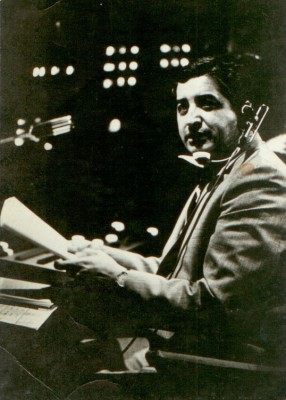EL PASO – While viewing the special screening here of the new documentary on the life and death of Mexican-American journalist Ruben Salazar, Man in the Middle, I experienced a mix of emotions.
The documentary by Phillip Rodriguez address the duality of his life as a journalist, but, it felt to me that it lacked a wider explanation of Salazar’s private life.
Salazar came from a Mexican background and grew up in El Paso, but the documentary portrayed him as identifying more with American culture.
Salazar was an outstanding journalist who took risks and was not afraid to take assignments other journalists avoided.
I felt that that my image of Salazar had changed after watching this documentary, as it explained that his death might not have been an accident, but rather an intentional attack.

Rubén Salazar became news director of KMEX, a Spanish-language TV station in Los Angeles, in 1970. At the same time, he wrote a column for the L.A. Times.
Salazar died in 1970 after he was hit by a tear-gas canister fired by police during a Chicano demonstration in Los Angeles. Before the incident he had said that he was followed and threaten by police who wanted him to back away from stories dealing with Chicano issues.
Thanks to the documentary I felt that Salazar did not embrace his Mexican heritage until he started writing about the Chicano movement and raised awareness of the Mexican-American plight.
That is a struggle for identity that I can relate to.
Living in a border city is almost synonymous with not knowing which side you belong to, which side of you do you show to the world. I understood Salazar’s decision to embrace one over the other, but as local artist and public figure, Rosa Guerrero said in a panel that followed the film, one must “take the best of both worlds.”
I was born in El Paso but lived in Ciudad Juárez, Mexico, until 2001. When I was younger, I would cross the border every morning to come here to school, but after 9/11, we moved here because of the long crossing times.
“The bridge and the river are a significant part of my life, perhaps more of one piece,” this was one of Salazar’s quotes that resonated with me.
I understand his struggle because I am going through a similar situation. On one hand, I have my Mexican customs and family and on the other, my goals and future in the U.S. Just like him, I struggle to accept each culture without completely shifting to one or the other.
My family in México calls me a ‘gringa’ and they poke fun at me for not knowing anything about México and my colleagues in the U.S. classify me as a ‘big-time’ Mexican and they make fun of my pronunciation of words, especially the –sh and –ch sounds.
However, I do not feel ashamed of being part of both cultures and love both sides. Having said that, I do have my preferences. For instance I love going to church in Spanish and school in English.
Given that Salazar was from the region that I grew up in, his story is that much more appealing to me.
Salazar has inspired me to write passionately about subjects that are important to me and to follow them with the same determination Salazar showed. He would not settle for less and neither will I.
As a binational writer I fell that i need to stay faithful to my ideals. Salazar was a renowned journalist who took advantage of being Mexican-American, living and working in two cultures.
I strongly believe that having both cultures is a huge benefit that will take me further in life.


Good work! Represent!
Flor, Thank you for your perspective on the Ruben Salazar Documentary, “The Man in the Middle.” It should be mandatory viewing for all Journalism Students, especially those at UTEP where Ruben graduated when it was Texas Western College. In fact, UTEP should name its School of Journalism after him. Even more important, all Journalism Students should read the columns he wrote for the Los Angeles Times. That’s where you will really find out why he was so controversial. The Los Angeles Times published all his columns in a book years ago. I still have my copy. I think if requested, The Times would print another edition. Those writings should be part of every Journalism Curriculum. I read those columns when they were first published in The Times in the late 60’s, early 70’s. At that time, I was in High School in Orange County, where Ruben also lived. He was one of the reasons I pursued a career in Broadcast Journalism for many years. Anyway, keep up the good work, Flor. Good Luck to you in your career.